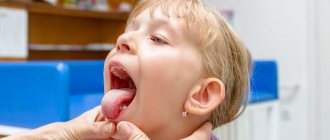Most often, healthy children pronounce their first words at about one year of age. If this does not happen, many parents begin to sound the alarm. However, experts in the field of early development have concluded that the initiation of speech is an individual process for which there is no clear age period. Studies of speech development show that the appearance of speech in a child depends both on the maturation of certain parts of the brain and on the environment in which the child grows. Knowing the characteristics of their child, parents can create a favorable environment for him and help overcome difficulties in the development of your baby's speech.
Speech development at an early age
Sometimes we mistake baby talk for “real” words. A child under one year old tries to repeat the speech of an adult in his own language, often understandable only to his mother. Already a six-month-old baby uses gestures and individual sounds to indicate his needs. Also at this age, the child learns to combine vowels and consonants when pronouncing syllables.
The process of speech development itself is not systematic in children of early and preschool age; very often one can observe leaps in speech development. All children begin to speak at different times. By the age of one year, some children can already pronounce up to 15 separate words. And according to the calculations of child psychologist S. Buller, by the age of 1.5 years, a child’s vocabulary can reach 232 words. At the same time, there are healthy children who at the age of two do not speak a word. Such “silent people” can suddenly begin to speak in whole phrases, catching up and ahead of their peers.
To get a silent child to talk and stimulate the development of his speech, you need to voice your actions, encourage dialogue with the help of questions, listen with interest and try to understand the baby’s answers. Then you will certainly hear that cherished first word.
How to formulate speech correctly
- Respond to the baby's humming and babbling, imitate his sounds, repeat them.
- Talk to your baby when you are caring for him: swaddling him, feeding him, bathing him. Talk to him throughout the day.
- Read bright, colorful books every day.
- Repeat short rhythmic poems and nursery rhymes.
- Teach your child the names of loved ones and the names of all the objects around him.
- Take your baby with you to new places, be with him in different situations.
- Draw the child's attention to various objects that make sounds (animals, birds, vehicles, etc.).
- Encourage your child to try to pronounce new words.
- “Talk” with your child new situations in which he finds himself, before, during and after the event.
- Look at the baby when you talk to him.
- Describe in detail and colorfully to your child what he hears, sees, does and feels.
- Play children's songs and fairy tales for your baby.
- When talking with your little interlocutor, do not imitate children's pronunciation; make sure that your speech is clear, expressive (but without babying), competent, simple and clear.
- Praise your child every time he initiates communication with you.
- Make sure that your child does not use sound pronunciations to indicate surrounding objects. Parents can use simplified forms of the words “give”, “am-am”, “tu-tu” when communicating with a child under one year old. This will help him get involved in the process of speech development. Then it is advisable to accompany the simplified words with the correct names. He saw the train: “Tut-tut!” - Mom responded: “Yes, the train has left.” The child is asked: “Who is this?” - he answers: “Woof-woof,” - mom explains that “woof” is said by the animal “dog.”
- Be sure to correct mistakes in your child’s speech, do it tactfully, otherwise the child may lose confidence in you.
- Enrich the child’s simplified speech: “More juice,” “Tanya wants more orange juice.”
- Choose not a narrative, but a descriptive style of communication (“There’s a crow flying” - “Look, there’s a crow flying over that house. It’s black and can croak loudly”).
- Listen to your child's answers to your questions, encourage his attempts to speak out.
- Help your child learn to listen and follow instructions through simple requests, naming a sequence of actions (preferably in a playful way): “Go to your room and bring the teddy bear.”
- For the development of a child’s speech abilities, play activities are very important, through which the child learns about the reality around him. So play with your baby!
- Include your child not only in the game, but also in real interaction with all family members. Be sure to give your little one useful tasks. Pass requests to other adults through it. Thank you for your help.
- Read every day; perhaps reading should be part of your evening bedtime ritual.
- Always listen carefully when your child speaks to you.
- Explain to your child what you think, what you plan, what you do, how you reason.
- Ask your child questions, stimulate him to think, encourage him to answer.
- Discuss with your child how he spent the day in kindergarten, how your walk together went. After playing with your child, remember the most interesting moments.
- Use visual materials. It is difficult for children to perceive words separated from an image.
- Show your child that you are listening to him carefully: nod, smile, answer his questions.
- And most importantly: support all your child’s endeavors, praise him even for minor successes.
It is important that the mother (or another adult caring for the baby), despite the workload, maintains a positive attitude towards life and communication. Therefore, take care of yourself, mothers, try to find moments of rest and switch to meeting with friends, favorite books, going to the theater. This is necessary not only for you, but also for your baby!
Stages of child speech development
As we have already said, the trajectories of speech development are individual for each child, and therefore psychologists and other specialists in the field of early development do not establish clear standards for speech development in children.
It is important to note that an indicator of speech development is not only the number of sounds and words that a child uses to communicate, but also his passive vocabulary, that is, those words that the child understands. The passive vocabulary is always larger than the active one, so if the child does not speak, but understands your speech, there is most likely no reason to worry.
Speech skills characteristic of the conditional norm in early and junior preschool age are presented in the table.
| Age | Speech development |
| 1-3 months | Scream. |
| 3-6 months | Humming – drawn-out sounds (“a-gu”, “a-gy”, “bu-u”, etc.). |
| 4-5 months | Squealing, laughter. Humming in various intonations. |
| 6 months | Babbling (syllables “ma”, “ba”). |
| 7-8 months | Increasing the number of pronounced sounds, onomatopoeia (“woof-woof”, “pee-pee”), understanding simple words and requests. |
| 9-11 months | Simple words (“mother”, “baba”, “give”, “na”). |
| 1–1.5 years | Simple two-word phrases (“give yum-yum”, “there’s a pussy there”). |
| 2-3 years | Phrases of 2-3 words, the appearance of question words. Naming famous colors, objects, body parts. Learning simple poems, telling short stories. |
| 34 years | Phrases of 4 or more words. A stranger can understand a child’s speech. |
If there is a strong discrepancy between the child’s speech development level and age norms, it is advisable to seek advice from a specialist (neurologist, speech therapist, psychologist) in order to exclude a delay in psycho-speech development.
Symptoms of delayed speech or mental development of a child may include the following:
- Problems with chewing and swallowing food;
- Constantly open mouth, excessive salivation;
- Refusal to communicate;
- Lack of eye contact;
- Slurred speech, “porridge in the mouth”;
- Difficulties in understanding speech (does not respond to requests);
- Inappropriate behavior.
Timely contact with specialists allows you to identify the cause of the child’s delayed speech development as early as possible and develop an individual plan for correctional and developmental classes.
Main stages of speech development
Nikitina Natalia Gennadievna
Main stages of speech development
A child is not born with developed speech. Mastering speech is a complex mental process that begins to take shape when a child’s hearing, vision, and articulatory apparatus reach a certain level of development . But even with a healthy brain, a sufficiently developed speech apparatus , good hearing and vision, a child without a speech environment will not speak.
development begins from the first days of life and goes through several stages .
1. Cry (newborn)
2. Walking (from 1 month to 6 months)
3. Babbling (6 to 12 months)
4. First words (from 1 year to 1 year 6 months)
5. "The Beginnings"
phrasal speech
(1 year 6 months – 2 years)
6. Simple phrase (2 years – 2 years 6 months)
7. Expanded phrase (2 years 6 months – 3 years)
.
The very first speech manifestation is a cry. The cry is reflexive in nature and is a reaction to uncomfortable conditions (hunger, pain, wet diapers, etc.)
. In a healthy newborn, the cry is loud, clear, with a short inhalation and a long exhalation. At 2-3 months, the cry begins to change qualitatively and the child begins to hum and laugh.
Humming - a stage of pre-speech development , is a drawn-out, quiet melodious sounds - these are chains of vowels close to “a, u, y”
, often combined with the consonants
"g, m"
.
It is during this period that the intonational language begins to form, which the child will use throughout his life. The child develops a revival complex (an emotional-motor reaction to the appearance of an adult)
.
An element of the revitalization complex is revelry. During this period, one should be wary of his absence or lack of intonation expressiveness, the absence of laughter. Walking is an important stage in preverbal (preverbal) speech development . During this period, along with preparing the speech apparatus for pronunciation of sounds, understanding of speech develops , and the baby learns to control intonation. A healthy child begins to react to intonation early, without yet understanding the meaning of the speech addressed to him. Communication between a child and an adult is built on an emotional basis .
These are the first lessons of the native language. The lack of emotional and positive contact with an adult, especially with the mother, has a negative impact on the development Silent adults or adults whose speech is not emotionally expressive do not contribute to the development of humming in a child, which is necessary for the development of speech and cognitive interest in the outside world. From the age of two to six to seven months, positive emotions of the mother (adult)
A child needs it for full
development , just like food and air. If a child aged from six months to three years is separated from his mother for a long time, this can lead to a delay in his development .
The speech of children raised in orphanages usually develops more slowly , and the formation of all components of the speech system . Even in a foster family environment, children surrounded by love, care and attention may experience difficulties in speech development .
The next stage development is characterized by the appearance of babbling, and lasts approximately five to nine months. Babbling is the repeated repetition of syllables (ma, ba, pa, yes, na)
under hearing control.
When babbling the duration of exhalation develops , and auditory attention is activated.
By ten months, in addition to individual sounds and sound combinations, the child begins to develop his first babbling words. They usually consist of two identical syllables: ma-ma, pa-pa, ba-ba, dyad-dya. By the end of the second half of the child’s life, so-called object-related speech appears - the ability to recognize people and objects in words. Hearing the name of his favorite toy, the child turns his head towards it, and sometimes points at it with his hand.
At the end of the first or at the beginning of the second year of life, the child pronounces his first real word and consciously begins to use speech. The dictionary consists of 9–12, and sometimes more words (kis, mu, aw, am and others)
. Children begin to speak in separate short phrases by the age of two.
The child’s speech continues to develop by imitation , so it is very important that the adults around him speak clearly, correctly, without long and complex phrases. By two years of age, the active vocabulary consists of approximately 250–300 words, and by three years of age it quickly increases and reaches 800–1000 words. Speech becomes a full-fledged means of communication.
The development of a child’s speech presupposes, on the one hand, understanding the meaning of what is said (passive speech), and on the other hand, pronouncing words and sentences (active speech)
.
Passive speech is ahead of active speech in its development .
Thus, at the age of seven to eight months, a child usually understands many words, including recognizing the names of objects spoken by an adult. At eight to nine months, children begin to correlate words with objects and individual actions. For some time, the number of words understood significantly exceeds the number of actively spoken ones. A child under two years old, understanding everything that adults tell him, following their simple instructions well ( “Give”
,
“Sit down”
,
“Take”
, may not utter a single word, or may be explained using babbling speech.
And yet, speech develops . The transition to active speech in such children occurs suddenly. Yesterday he didn’t say anything, but today he speaks out in detailed sentences .
In order for a child to begin to use all the words he understands in speech, three basic conditions : emotionally warm communication with an adult; the emergence of interest in the word; formation of one’s own objective activity. Let's take a closer look at each of these conditions.
First, speech arises and develops as a means of communication between a child and other people. By entering into emotional communication with a baby, adults not only entertain him , but also create conditions for speech development .
The second, no less important condition development is the saturation of the child’s experience with audible speech. The child hears speech constantly. Adults turn to him and talk a lot in his presence. The sound environment surrounding a modern child is literally saturated with speech sounds - this is a radio, a TV, a player, and a tape recorder. But the baby does not always hear and distinguish speech sounds . Audible speech has a positive effect on speech development only if it is included in direct communication with a person. It's not enough just to have a record or radio playing. Unable to analyze loud and unnecessary sounds, the child soon ceases to perceive them and may even temporarily become deaf, protecting himself from noise that he does not understand. The perception of speech by a child under one and a half to two years of age must be organized in a certain way. You can listen to the record with him. The longer he listens to the same speech, the more joy he experiences from recognizing familiar sounds, the better he identifies and distinguishes them. Audible speech should make the baby want to “talk himself”
-make babbling sounds that resemble real speech.
For a child, audible speech is inseparable from a specific person. Moreover, this person should not constantly talk. Listening to the speech of those around him, he begins to isolate individual words and distinguish phonemes of his native language, that is, to isolate words that are close in sound but different in meaning.
The formation of substantive activity and business cooperation with adults is the third necessary condition for the development of active speech . In order for a child to start talking on his own initiative, he must have a need to do so. It consists of the need to communicate with an adult and the need for some object. Neither one nor the other separately leads to a word. The baby can successfully communicate with adults without any words, exchanging smiles and vocalizations, and the parents already understand everything. He is able to play with toys for a long time without feeling the desire to name them. “say something” task
An adult puts it in front of the child. And the need for cooperation encourages the child to accept this task and say the right word. Communication with an adult about objects and the objective actions included in communication create for the child the need to name the desired object and pronounce the word himself.
Thus, if a child is drawn to an adult and joint activities with him, loves to work with objects, listens carefully and repeats individual words after an adult, we can assume that he is ready for active speech and will speak very soon. However, even in this case, the transition to active speech may be somewhat delayed. To activate speech ability, it is necessary to carry out some kind of “training”
child.
Try to move the toy that is necessary and attractive to the baby so that he cannot reach it himself. This will make him want to get the desired object. In response to his attempts to reach the toy, clearly pronounce its name: “Lala”
,
"Misha"
,
"machine"
.
Do not give the toy until he tries to name it. At first, the child will struggle to reach for the toy and express his impatience. Then his efforts will switch to you: most likely, he will point his finger at the object and try to beg him with his angry babble “give-give-give
. And only then will interest in the word arise, which will manifest itself in the fact that the child will begin to look at your lips and listen to the word that you pronounce. Therefore, pronounce the word clearly, with pronounced and even exaggerated articulation, so that the baby will immediately pay attention to the movements of your lips. Focus on the articulatory apparatus is an important sign that the word has stood out in the child’s mind and has become the subject of his attention, which means that very soon he will pronounce it himself. The first word brings great joy to the child. And the baby repeats it again and again, and sometimes even prefers verbal play to the previously desired toy.
Children aged 1.5–2 years begin to actively name objects when the need arises, and not just imitate an adult. If the child stops at the first stage and tries to take possession of the toy, then he will not say its name. This means that you need to draw attention to the sounding word. Quite often, the delay in the development of active speech is due to the fact that adults satisfy all the baby’s desires, guessing them at first glance or gesture. Having learned ready-made words from adults and operating with them, the child is not yet aware of the entire content that they express. The subject-matter of a word can be learned, but the system of abstractions and generalizations behind them cannot. An example can be given of the discrepancy between the meanings of words in the speech of children and adults:
"I miss the warmth"
, she told her daughter.
The daughter was surprised: “Do you freeze even on summer days?”
“You won’t understand, you’re still young”
, - the mother sighed tiredly.
And the daughter shouts: “I got it!”
, - and drags the blanket.
(A. Barto)
.
I bring to your attention recommendations for stimulating the speech of young children.
"Talking to Yourself"
When the baby is not far from you, start talking out loud about what you see, hear, think, feel.
You need to speak slowly (but without drawing out the words)
and clearly, in short, simple sentences that are understandable to the child. For example:
“Where is the cup?”
,
“I see a cup”
,
“The cup is on the table”
,
“There is tea in the cup”
,
“I will drink tea”
.
"Parallel Conversation"
This technique differs from the previous one in that you describe all the child’s actions: what he sees, hears, feels, touches.
Using “parallel conversation”
, you seem to suggest to the child words that express his experience, words that he will later begin to use independently.
“Provocation, or artificial misunderstanding of the child”
This technique helps the child master situational speech and consists in the fact that the adult is in no hurry to show his understanding.
For example, if a baby points to a shelf with toys, looks at you pleadingly and you understand well what he needs at the moment. Try giving him the wrong toy. If any difficulty arises, tell your child: “I don’t understand what you want: a cat, a doll or a car?”
In such situations, the child willingly activates his
speech abilities .
"Spreading"
Continue and complement everything your baby says, but don’t force him to repeat it – it’s enough that he hears you. For example: Child:
“Soup.”
Adult:
“Vegetable soup is very tasty
,
“Soup is eaten with a spoon”
... Answering the child with a common sentence By using more complex language forms and rich vocabulary, you gradually lead the child to finish his thought and, accordingly, prepare the ground for mastering contextual speech.
"Sentences"
Using play songs, nursery rhymes, and sentences in joint activities with children gives them great joy.
Accompanying a child’s actions with words contributes to his involuntary learning of the ability to listen attentively to the sounds of speech, grasp its rhythm, individual sound combinations and gradually penetrate into their meaning. The important significance of folklore works is that they satisfy the baby’s need for emotional and tactile (
touching and stroking ) contact with adults. Most children are kinesthetic by nature: they love to be stroked, cuddled, and held by hands.
"Choice"
Give your child the opportunity to choose.
The formation of responsibility begins from the moment when the child is allowed to play an active role in what concerns him personally. The exercise of choice gives the child a sense of self-worth and self-worth. ( “Do you want to play with a doll or a teddy bear?”
,
“Should I pour you half a glass of milk or a whole glass?”
)
"Games with natural materials"
A huge impact on the growth
speech and cognitive activity is exerted by the variety and accessibility of objects that he can explore from time to time: look, touch, taste, experiment... (the child is eager for sand, water, clay)
.
in “fussing”
with them: the child is busy, he gets acquainted with the material, studies its properties...
"Productive activities"
At an early stage
of speech development , the child masters a wide variety of languages that replace words - gestures, facial expressions, onomatopoeia. Productive activities are more accessible: modeling, drawing, appliqué. They develop not only the child’s speech abilities , but also sensory ones, which are of particular importance in the formation of mental activity.
“Replacement”
“Imagine that...”
- these words are filled with attractive force for the child.
At this age, the child enjoys imagining that a cube is a pie, a shoebox is a house... At this age, children really like games - pantomimes, games - imitations, which activate the child’s observation and curiosity. You can involve your child in the game with a question or sentence: “Guess what I’m doing now?”
Start with simple actions: comb your hair, brush your teeth, pour juice into a cup...
"Role-playing game"
This type of children's activity is just being formed.
For example, a game of telephone, when a child, using a toy device, can call mom or dad... Such a game stimulates the child’s speech development , builds self-confidence, and increases communication function.
"Musical Games"
The importance of musical games in
speech development can hardly be overestimated. Children sing along with pleasure, they love musical instruments, games, such as “Loaf”
,
“Over the bumps”
... Encourage the child’s desire to move to the music, to sing along. There is nothing wrong with the fact that the child pronounces only the endings or the last words. Subsequently, the child will begin to sing small songs in their entirety. A child dances and sings about what he sees and hears around him, invents his own songs and melodies - this is how a creator is born!
It is very important to remember that the speech of an adult is a model for the speech of a child!
Therefore, the more a child communicates with adults and peers, the faster and better his speech will develop .
An adult's speech should be:
- clear, unhurried;
- accessible to the baby’s understanding, that is, not overloaded with difficult-to-pronounce words and complex sentences;
- literate, free of babbling words and distortions of sound pronunciation.
In the absence of such a model, the reduction and impoverishment of communication between a child and an adult, normal speech and mental development slows down , therefore, it is very important to communicate with the child, read poetry and fairy tales to him.
Thus, by speaking to a child in the correct language, telling him fairy tales, learning poems and nursery rhymes with him, and playing, the sooner he will master correct speech!
A child’s speech is formed under the influence of the speech of adults and largely depends on sufficient speech practice , a normal speech environment and on upbringing and training, which begin from the first days of his life.
We offer several simple rules, following which you, teachers, can help your child with his speech development .
1. You need to talk to your child every day, tell him what is happening around him, read books.
2. It is imperative to call a spade a spade: not bb, but a car, not yum-yum, but eat, etc.
3. You should speak in short sentences, with a pause between them.
4. You cannot talk to your child in tongue twisters.
5. When naming objects, you must show them at least in a picture. You should not teach a child to say a word whose meaning he does not understand, and will not understand until he sees it.
6. It is important to repeat the same words many times until the baby remembers and reproduces them.
7. You don’t need to talk to your child when he doesn’t want to or is tired.
8. You cannot ignore the baby’s question; you need to answer it in detail and slowly so that the child understands every word.
9. If a child makes mistakes in words, you should prompt him unobtrusively so that he does not lose the desire to speak. After all, little children do not fail.
10. You should not guess the baby’s desire and give him everything that he silently points at with his finger. There is no need to force him to name the object, but sometimes you should pretend that you don’t see anything, and then the child will try to say, name what he needs.
First word
What should a baby's first word be? Early development specialists believe that it does not necessarily have to be familiar and familiar to us. Experts tend to consider any recognizable set of sounds that denote a person, object or action (for example, “baka” instead of “dog”, “ka” instead of “porridge”) as a peculiar word.
Usually children say their first word at the age of 8-9 months. Most often these are onomatopoeias or words of two repeated syllables.
How to understand that a child said exactly a word, and not just a set of sounds? If the child’s statements are repeated under the same circumstances, even if you cannot understand them, rest assured that your baby said a word, his speech apparatus is simply not yet developed enough to pronounce this word legibly. To prevent your child’s speech development from slowing down, you should not speak to your baby in his “baby” language. If your child says “beep beep” while pointing at a car, say, “That’s right, it’s a car.” While walking in the yard, ask your child to show you the car. And to translate the word “car” from a child’s passive vocabulary to an active one, point to the car and ask: “What is that?” Then your baby will certainly learn a new word and learn to pronounce it correctly.
There is a myth that a child’s first word must be the word “mother.” Indeed, some children say “mom” as early as 4-5 months. Also, even before one year old, children can say “Lala”, “Baba”, etc. These are all easy-to-pronounce words that are formed from the repeated babble of a child. The words that are easy to pronounce come first.
First phrases
An important stage in speech development is the acquisition of phrasal speech in preschool age. By the age of 1.5–2 years, simple two-word phrases usually appear in speech. The vocabulary is actively increasing, verbs, prepositions, and adverbs are being used. At 2-3 years old, children begin to use adjectives. The age of 3-5 years is often called the age of “why”. During this period, children are interested in everything, eagerly learn about the world around them and, accordingly, ask adults many questions.
If at this age the child does not have phrasal speech, you should consult a specialist. Developmental activities will help fill in the gaps and lay the foundation for the further development of your baby’s speech.
To develop your child’s phrasal speech, you can do the following:
- Read books to your child that are appropriate for his age;
- Look at the pictures;
- Listen to music with your child, sing songs, dance;
- Answer the child’s questions and support his research interest;
- Provide the child with new impressions, discuss what he sees;
- Monitor the purity of your own speech;
- Encourage communication with children.
There are also a number of games and exercises that contribute to the development of a child’s speech. These include:
- Games to develop fine motor skills;
- Articulation gymnastics;
- Finger gymnastics.
You can get acquainted with these and many other useful exercises in classes at. The good thing about these games is that you can play them at home yourself. They not only have a beneficial effect on speech development, but also develop the baby’s attention, memory, and thinking. Perform only those exercises that evoke positive emotions in you and your child, do it unobtrusively and with genuine interest. The most important thing is to enjoy communicating with each other.
Massage of left and right fingers
The massage is done by the mother or speech therapist. Performed by applying light pressure from the fingertips to the wrist. Rubbing from top to bottom. Flexion and extension of fingers.
Very good training of the fine muscles of the fingers is provided by folk games with fingers: “Magpie white-sided”, “Goat”, “Fingers in the forest”, “Finger-boy” and others.
Game “Fingers in the Forest”
The adult holds the child’s hand in front of him and bends the little finger, bends the ring finger, middle finger, index finger and tickles the palm (this finger went into the forest, this finger found a mushroom, this finger washed the mushroom, this finger cooked the mushroom, this finger ate everything, that’s why got fat).
Game “Palm Tree”
The game can be played with several children. Children raise their right hand (or left) with the palm facing them. With the left hand, take the little finger and bend it after the words “wants to sleep”, bend the ring, middle, index, and thumb. They raise their right hand and straighten their fingers at the word “get up” (this finger wants to sleep, this finger went to bed, this finger took a little nap, this finger is already asleep, this finger is fast asleep. Hush, hush! Don’t make noise! The red sun will rise, morning the clear will come, the birds will chirp, the fingers will rise).
Finger gymnastics. The child does it himself
- Plays the piano".
- “Frogs” – simultaneous extension of the fingers.
- Flexion and extension of the fingers one at a time into and out of the fist.
- The fingers greet the thumb of their hand.
- The fingers greet the fingers of the other hand.
- Show me the goat.
- Show me your bunny ears.
- We play the drum.
- Let's clap our hands.
Working with small materials or what you can do to keep your child busy….
- laying out flowers, balls, houses and other mosaic items, millet, rice grains, sticks
- collecting pyramids of various sizes.
- stringing beads onto a rod, removing them one by one
- lacing: use thick cardboard with holes, learn to tie shoelaces
- fastening buttons
- tear the paper into small pieces, first randomly, and then along the folds, along the contour.
Creation
- Applications . We teach the child to work with scissors, hold scissors, cut in straight lines, then along the contour: circles, ovals, squares, triangles and other figures. These figures are cut out of colored paper or painted and made into applications: “Holiday flags”, Collecting apples”, “Flowers”, “We are going to a holiday” (stick on flags, balls, flowers), “Decorate the Christmas tree with toys” (outline is given Christmas trees), “Building a house” (stick squares on the rectangle).
- Drawing. We learn how to hold a pencil, felt-tip pen, and brush correctly. When working with paints, we teach how to carefully apply paint and clean the work area.
To develop active speech, it is necessary to create situations in which the child is forced to address adults with speech.
- Show and name objects, teaching them to use words to find them with their eyes or to bring them.
- Learn to name images in pictures in simplified words: cow – “moo-moo”, dog – “av-aw”, cat – “meow-meow”, etc.
- Gradually displacing onomatopoeia from the child’s speech, teach him to name objects and actions. You need to talk with the child about those objects that attract him at the moment, about the actions that he performs, forming in him a connection between word and object, word and action.
- Arouse speech activity in the child through provoking questions: “Is this a cat?”, and show the dog.
Please note that reading poetry, fairy tales, and nursery rhymes contributes to speech development!
We also remind you that speech formation is influenced not by one specific exercise, but by a daily monotonous set of activities!
At the Medical Center “President-Med” you can sign up for a consultation with a children's speech therapist, have a diagnosis of speech development, get recommendations or take a speech correction course.
conclusions
Speech development is a complex process, and it occurs differently for each child. Experts identify several stages of speech development in children, each of which involves the development of new speech skills. These stages do not have strict age limits. The transition from one stage of speech development to another can occur either smoothly or abruptly.
If the baby is healthy, speech development occurs naturally when you communicate with him and talk about the world around him. Your child watches you and tries to copy your speech, so it is important to monitor the correctness of your own speech. It is necessary to create a favorable environment for the child in which he can fulfill the needs characteristic of his age. You can offer your child games to develop fine motor skills, as well as introduce them to articulation and finger gymnastics.
If you feel that your baby is experiencing difficulties and the development of his speech is far behind the conventional boundaries of the norm, you need to consult with a specialist to rule out health problems and delayed psycho-speech development.







